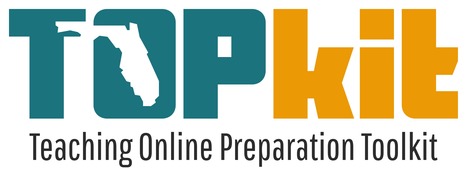 Your new post is loading...
 Your new post is loading...
Some days you get to work early, work nonstop, and head home without being able to figure out what you actually accomplished. Everything rushes past you in a blur of emails, meetings, and errands, and your to-do list remains more or less untouched. You’re always going to have a few workdays like this no matter what you do. But if they start happening regularly, you may have a problem on your hands. If that’s the case, then it’s time to start looking for systematic failures, not just one-off fumbles. And ironically enough, the best place to look may be at your to-do list itself. What better record do you have of the tasks that you’re consistently failing to achieve? These are a few common to-do list items that might be getting in the way of your more important goals. If you can cut them out–even just for a day or two–you may be able to regain your footing.
Via The Learning Factor
Powerful social-media trends affecting both users and brands are strengthening and accelerating.
Via Marc Wachtfogel, Ph.D.
Ask the members of any team if they want to institute better processes, and be prepared for them to roll their eyes. “‘Better processes’ means ‘more bureaucracy,’” someone will mutter. But ask that same team how much they enjoy doing projects the hard way — duplicating efforts, scrambling to meet deadlines when someone drops the ball, or bearing the brunt of customer fury — and you can expect the floodgates to open. Why do people love to hate “process” but rail against disorganization? It is because most people associate processes with checklists, forms, and rules — the overseer breathing down their necks. Not surprisingly, leaders wanting to foster innovation and creativity are reluctant to institute such rigid controls and procedures.
Via The Learning Factor
Defined hierarchy. Commanding leadership. These corporate ligaments secure firms in the face of threats and unify them against competition. Few beliefs are more widely held in business. The intuition, though, is wrong. “When you look at real organizations, having a clear hierarchy within your firm actually makes people turn on each other when they face an outside threat,” says Lindred Greer, a professor of organizational behavior at Stanford Graduate School of Business. Effective teamwork against threats requires not hierarchy, but egalitarianism; not centralized power, but a culture in which all voices count. Along with Lisanne van Bunderen of the University of Amsterdam and Daan Van Knippenberg of Drexel University, the research team teased out this finding through two complementary studies. In the first study, an experiment, teams of three students developed and pitched a consultancy project to a prospective client. Some of these teams were non-hierarchical, while members of other teams arbitrarily received titles: senior consultant, consultant, junior consultant. Likewise, some teams faced no rivals, while others were told they were competing with a rival firm for clients. The researchers found that the subset of hierarchical teams facing competition with rival firms struggled with infighting while the egalitarian teams cooperated on their work.
Via The Learning Factor
"This article explores the uncertainty and anxiety that newcomers to Instructional Design may be faced with during the transition from student to job seeker. It is also a look at the growing positive outlook of Instructional Design from a new perspective."
Via EDTECH@UTRGV
A free online platform that makes professional feedback easy through short simple evaluations, so individuals can grow to their full potential faster and more efficiently.
Via Nik Peachey
What skill will we need for the future? This infographic perfectly illustrates the skills needed to succeed, including the most sought after jobs.
Via Marc Wachtfogel, Ph.D.
To effectively lead and motivate employees, you don’t need charisma and a grand vision. Research from Michigan State University (MSU) found that being a successful boss was more about mind over matter. The study, published in the journal Organizational Behavior and Human Decision Processes, found that a leader’s focus, or mind-set, affects his or her own behavior, which in turn affects employees’ motivation. And the good news is that your mind-set can be changed to produce certain outcomes from workers, from creativity to loss prevention. “Effective leadership may be based in part on a leader’s ability to recognize when a particular mental state is needed in their employees and to adapt their own mental state and their behaviors to elicit that mind-set,” says Brent Scott, MSU professor of management and study coauthor. “Part of the story here is that you don’t have to be Steve Jobs to be an effective leader. There is no one-size-fits-all approach to managing.”
Via The Learning Factor
Millennials are starting to take control in the workplace. There are now more than 75 million millennials in the workforce, more than baby boomers (just shy of 75 million) and Gen Xers (66 million). Now entering their late 20s and early 30s, the oldest members of the generation are starting to take more leadership positions in major organizations. Despite the fact that millennials are sporting one of the lowest rates of entrepreneurship in 25 years, 60% see themselves as entrepreneurs, and 90% recognize entrepreneurship as a mindset. Combined with their natural tendencies toward independent thought and mild to moderate anti-establishment vibes, this is making millennials a strong force of direction and leadership—and an even stronger one to come in the next several years.
Via The Learning Factor
What will we humans do as artificial intelligence and automation replace us in an ever-wider range of roles? In a world of rapid change, educators, policy makers and parents ask how education must change. What skills will be required for our future? Science and math? Creativity? Emotional intelligence? Empathy?
These are all useful for flourishing, but I’d like to add one capability nearly absent from most of education: how to discover, select and pursue mission and purpose. By this, I refer both to modest, near-term objectives, as well as the longer-term notion of life purpose. As technology increasingly enables us to do nearly anything, what should we do and why should we do it?
Few if any of us have been taught to identify and select missions to pursue. Most formal education is syllabus-driven: what’s expected, defined by the instructor. Later, for the sake of efficiency, “work” typically channels attention into narrow lanes — again defined by others.
Via Kim Flintoff
First-time managers often ask themselves how to develop a leadership style that suits them: “Who should I model myself after? What kind of leader should I be?” It’s great to think critically about your approach to managing others, particularly when you’re new to it, but these questions won’t exactly help you. That’s because they assume that leadership is something you try on and show off, a “style” that’s curated and intentional. But especially in the beginning, your style will be based far less on mirroring others’ habits and behaviors and far more on instinct and intuition. And that’s not necessarily a bad thing.
Via The Learning Factor
You don’t need to be told why it matters to be transparent and honest at work–that much is a given. So is the overall usefulness of expressing yourself clearly, confidently, and with as few filler words as possible. But in the effort to do that, many of us fall back on common expressions that might sound totally fine in social situations but can do some quiet damage in the workplace. One of them is “I’m sorry.” Another is “to be honest.” The latter turn of phrase–and versions of it, like “honestly,” “frankly,” “if I can be honest with you,” or “let me be frank”–is easy to resort to when you want to cut through the crap, come clean, or offer your unvarnished opinion. But these expressions also tend to attach themselves to–and subtly encourage–certain messages that are either better left unsaid or ought to be rephrased. Here are times when “to be honest” can make you sound less authoritative around the office.
Via The Learning Factor
Overview This section covers checklists, rubrics, and guidelines for evaluating online programs and course quality. The Selection/Application/Implementation Guide and Resources/Examples may be used to create a customized program and course evaluation process for an institution’s specific needs. These artifacts may…Read more Checklists & Rubrics ›
Via Ana Cristina Pratas
|
Uncover the key differences between people that bring an open and closed mind to the table and learn how those two mindsets affect our success.
The tech behind bitcoin–called blockchain –has the potential to influence higher ed in more ways than one might think.
Via EDTECH@UTRGV
You can feel it start to happen–at first slowly, then all at once. You get a little bit tired and before you know it, you’re mindlessly scrolling your Facebook feed. You’re distracted and spent–you just can’t handle another minute of real work. You’ve hit the mid-afternoon slump. “Most of us are sitting all day, staring at a computer screen highly focused… you can’t sustain that for long,” says internist Lorraine Maita, MD, author of How To Live Younger. “At about 3:00 or 4:00 p.m., your cortisol starts to drop.” While our automatic reaction might be to reach for a bag of Sun Chips and watch a random YouTube clip, those behaviors will only prolong the slump. You will be better off if you try to reset your body and mind to help you regain focus. Maita recommends a number of activities, including listening to upbeat music or breathing deeply for a few minutes, to re-energize the body. Below are few more examples of how to get your focus back.
Via The Learning Factor
Having a title doesn't make you a leader — your actions do. Here are 5 simple actions you can do to embrace the leader within.
Via EDTECH@UTRGV
Getting smart people into your company is hard enough. Turning them all into great collaborators and risk-takers is even harder. Even on the most high-performing teams, coworkers don’t just openly share feedback and challenge each others’ ideas all on their own–managers need to create a culture that encourages this. And that usually requires building your team’s collective emotional intelligence. Here are a few straightforward (and entirely low-tech ways) to get started.
Via The Learning Factor
The world's largest retailer said Wednesday it's working with Google to offer hundreds of thousands of items from laundry detergent to Legos for voice shopping through Google Assistant. The capability will be available in late September. It's Google's biggest retail partnership — and the most personalized shopping experience it offers — as it tries to broaden the reach of its voice-activated assistant Home speaker. And it underscores Walmart's drive to compete in an area dominated by Amazon's Alexa-powered Echo device.
Via Marc Wachtfogel, Ph.D.
We all know that the work landscape is changing. The jobs that will be in demand are shifting as more are automated by artificial intelligence, machine learning, and robots. Teams are becoming more disparate and globalization has added new collaboration challenges. At the same time, more millennials are taking on management roles, and even our work spaces will undergo changes between now and 2025. “Change will be happening so quickly that 50% of the occupations that exist today will not exist 10 years from now. So we’re going to be living in an environment that is extremely adaptable and changing all the time,” says Liz Bentley, the founder of Liz Bentley Associates, a leadership development consulting firm.
Via The Learning Factor
Explore the stories behind 100 images that changed the world, selected by TIME and an international team of curators. And watch our new series of original short documentaries that tell the surprising stories behind the pictures.
Via Nik Peachey
Robots and artificial intelligence in the workplace. A dispersed workforce in which people work from anywhere, anytime. The need to constantly learn new skills to revitalize one's career. These trends and more are just part of what the future of work could entail—and we must surely adapt.
It’s incredible how using humor appropriately at the workplace can transform the drab work environment to a happy and exciting one. By nature, sharing jokes and laughing things out tends to help relieve tensions. At work, additionally, humor
|



 Your new post is loading...
Your new post is loading...
















































These are a few common to-do list distractions that get in the way of what you really need to get done.
"There’s such a flood of work to do that it’s hard to focus for long on just one thing. So you begin work on that major report, only to find yourself 20 minutes later flitting between your email, your text messages, and maybe two other tasks on top of that. You’re always going to have a few workdays like this no matter what you do. But if they start happening regularly, you may have a problem on your hands."